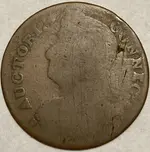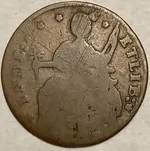Here’s one you may not have seen before.
After the late 16th Century, the ‘Spanish dollar’ (aka ‘Mexican dollar’ and ‘silver peso’) increasingly became the de facto currency for trade in the Far East, trusted in China especially for its reliable weight and silver fineness. China ultimately produced its own version as the silver yuan (‘dragon dollar’) which circulated alongside Spanish/Mexican coins in trade with its neighbours.
Following its defeat in the Opium Wars of 1839–1842 and 1856–1860, China was forced to open its ports to foreign trade. A general shortage of Spanish/Mexican coins resulted in a number of Western nations trading with China and other Far Eastern countries (for commodities such as tea, silk and porcelain) ultimately producing their own versions in equivalent weight and fineness. The coins were known as ‘trade dollars’.
In 1895, lobbying by the Hong Kong Chamber of Commerce with support from the Straits Settlements (British territories in Asia) led to production of the ‘British Trade Dollar’ to alleviate the shortage. Like this one, from my collection (not dug).
View attachment 2183197
View attachment 2183198
The reverse has ‘One Dollar’ in Chinese script and ‘One Ringgit’ in Jawi Malay, with the Chinese symbol for longevity in the centre. Most were minted in India, but some in London, and mine has the ‘B’ mintmark for Bombay (now Mumbai) on the middle tine of Britannia’s trident:
View attachment 2183199
They were struck as 27.95g of .900 silver (a slightly lower standard than the silver peso, which circulated alongside it) and intended for wider circulation in British territories, but the adoption of the ‘Straits dollar’ in 1905 left Hong Kong as the only British colony using them and they ceased to be produced in 1935. The coin never circulated in Britain but had a fluctuating exchange value depending on the bullion price for silver.





